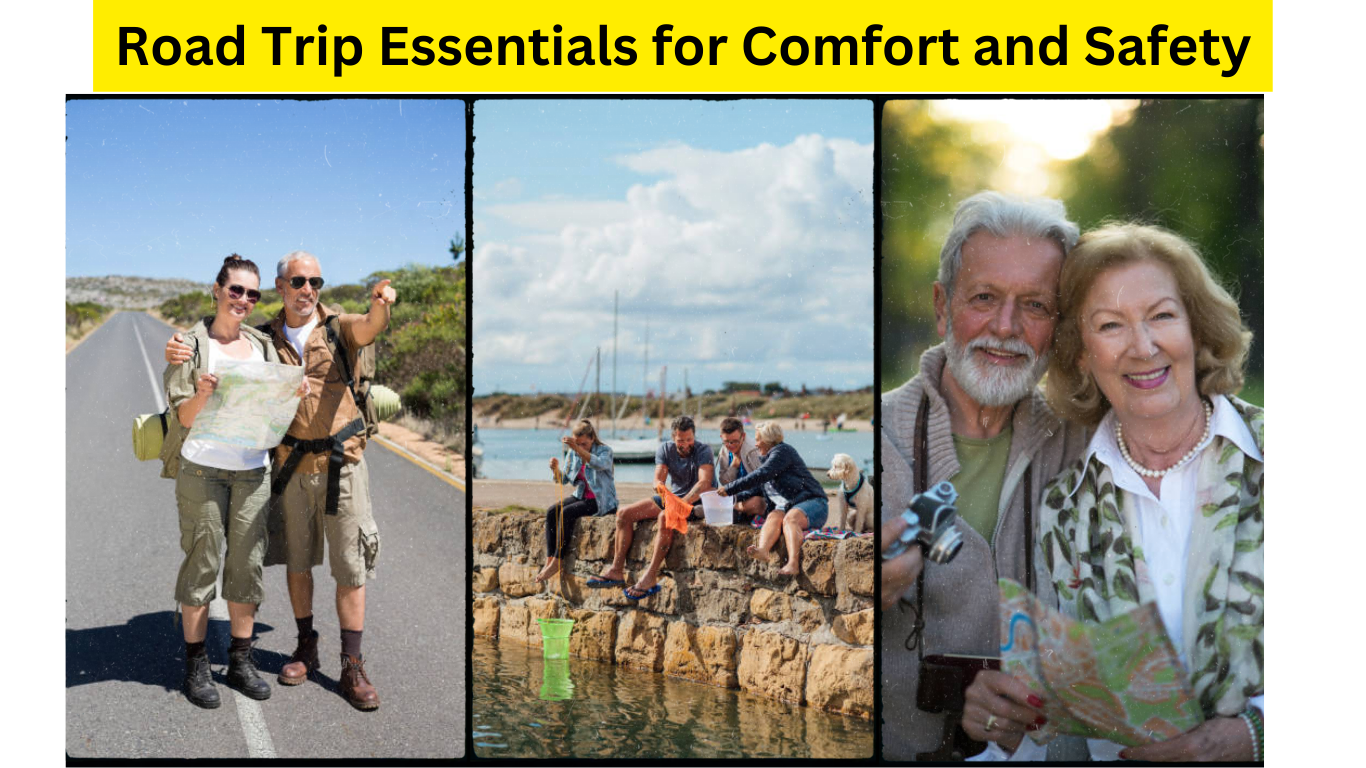Embarking on a multi-generational family trip is a chance to create cherished memories, strengthen bonds, and embark on adventures that span generations. Whether planning a journey to the picturesque Panorama Route or the stunning Drakensberg region, meticulous planning is the key to a successful trip. This guide will explore how to craft an unforgettable multi-generational family vacation.
Our journey begins with the importance of early planning, considering everyone’s schedules, and selecting the perfect destination that caters to diverse interests and physical abilities. We’ll delve into customizing activities to suit each family member’s preferences, allowing for essential personal time and the art of unplugging to connect on a deeper level. Finally, we’ll offer valuable insights for those who relish road trips, ensuring safety, comfort, and scenic delights.
Join us on this exploration of crafting multi-generational adventures that will leave a lasting imprint in the hearts of your family members, creating bonds that transcend time and age.
Tip 1: Start Early and Plan for a Seamless Family Getaway

Starting your multi-generational family trip planning well ahead of time is essential to ensure a smooth and enjoyable experience for everyone involved. Here are some detailed steps to help you get started:
- Gather Input from Family Members: Begin by discussing the idea of a multi-generational trip with your family members. Collect their input on preferred destinations, activities, and travel dates. This collaborative approach will ensure that everyone’s interests are considered.
- Create a Trip Timeline: Consider the following factors when creating a trip timeline:
- School Holidays: Consider the school schedules of children or teenagers in the family. Plan the trip during school breaks to avoid disruptions to their education.
- Work Leave Days: Coordinate with working family members to identify suitable time frames for the trip. Check for any work-related commitments or busy periods that should be avoided.
- Weather Conditions: Research the weather conditions at your chosen destination during different times of the year. Select a season that offers comfortable weather for your planned activities.
- Special Events: Check for any particular family occasions, such as milestone birthdays or anniversaries, that may influence your travel dates.
- Delegate Responsibilities: Assign specific planning responsibilities to family members based on their strengths and interests. For example, someone tech-savvy could handle online research and booking accommodations, while another family member might coordinate transportation.
- Consider Professional Help: If the complexity of planning becomes overwhelming, consider hiring a professional travel agent. They can provide valuable expertise in designing multi-generational trips and handle logistics, such as booking flights and accommodations.
- Set a Budget: Determine a budget that works for the entire family. This should include expenses like travel, accommodation, activities, and meals. Ensure everyone is comfortable with the funding to avoid financial stress during the trip.
- Create an Itinerary: Work together to create a rough itinerary that outlines the daily activities and must-see attractions at your chosen destination. Be sure to include a mix of activities that cater to different age groups and interests within the family.
- Accommodation Planning: Choose accommodations that can comfortably accommodate all family members. Consider options like vacation rentals, family-friendly resorts, or interconnected hotel rooms.
- Travel Insurance: Investigate the availability of travel insurance for the entire family. It’s wise to have coverage in case of unexpected events or emergencies during the trip.
- Communication: Establish clear lines of communication among family members involved in planning. Use tools like group chats or shared online documents to update everyone on progress and changes.
- Regular Check-Ins: Schedule regular check-in meetings to review your planning progress. This will help ensure that everything is on track and that any issues are addressed promptly.
By following these steps and starting your planning at least six months before the trip, you’ll have a better chance of creating a multi-generational family vacation that everyone will enjoy and remember.
Tip 2: Choose the Perfect Destination

Selecting the correct destination for your multi-generational family trip is crucial to ensure every family member has a memorable and enjoyable experience. Here are some steps to help you choose the ideal destination:
- Family Input: Start by discussing the preferences and interests of all family members. Create a list of activities and types of destinations that appeal to everyone. Consider cultural interests, outdoor adventures, relaxation, and educational experiences.
- Age and Physical Abilities: Consider each family member’s age and physical abilities. Some may have mobility limitations, while others may be more adventurous. Choose a destination that can accommodate these varying needs. For example, if you have older family members, ensure that there are accessible facilities and activities.
- Safety Considerations: Research the safety of your chosen destination, especially if you have younger children or elderly family members traveling with you. Look into factors like healthcare facilities, local safety conditions, and required vaccinations or health precautions.
- Diverse Activities: Opt for a destination that offers a variety of activities to cater to different interests within the family. For instance, a goal with a mix of cultural sites, outdoor adventures, and relaxation options can keep everyone engaged and satisfied.
- Accommodation Accessibility: When selecting accommodations, ensure they are family-friendly and can accommodate the needs of all family members. If you have young children, look for properties with childcare services, while accessible rooms may be necessary for older family members.
- Educational Opportunities: Consider destinations that provide educational opportunities for children and adults. Historical sites, museums, wildlife reserves, or interactive cultural experiences can offer valuable learning experiences for all generations.
- Nature and Relaxation: If relaxation is a priority, choose a destination that offers natural beauty and tranquility. Whether it’s a beachfront resort, a mountain retreat, or a serene countryside location, ensure that there are opportunities for rest and rejuvenation.
- Local Cuisine: Food can be a significant part of a travel experience. Consider destinations known for their culinary offerings, mainly if your family includes food enthusiasts. Explore local cuisine and dining options that cater to various dietary preferences.
- Accessibility: Evaluate the accessibility of the destination. Check for direct flights or convenient transportation options to reach the location. Minimizing travel time and inconvenience can make the trip more enjoyable for everyone.
- Weather: Research the weather conditions at your chosen destination during the planned travel dates. Ensure that the climate is suitable for the activities you have in mind and that extreme weather won’t disrupt your plans.
- Cultural Sensitivity: Be mindful of cultural differences and customs in your chosen destination. Educate your family about local norms and traditions to ensure respectful and meaningful interactions with the local community.
By considering these factors and involving all family members in the decision-making process, you can choose a destination that caters to your multi-generational family’s diverse interests and needs, leading to a rewarding and memorable travel experience for everyone.
Tip 3: Customize Activities for Every Generation

Customizing activities to suit your multi-generational family members’ diverse interests and abilities is essential for creating a memorable and inclusive trip. Here’s how to plan and tailor activities to individual preferences:
- Family Discussion: Start by openly discussing their interests and preferences with your family members. Ask each person to share what activities or experiences they would like to have during the trip. Encourage everyone to express their desires and be open to different ideas.
- Create Activity Categories: Categorize the activities based on interests and physical capabilities. Common categories may include:
- Cultural Exploration: Visiting museums, historical sites, art galleries, and attending cultural performances.
- Outdoor Adventures: Hiking, biking, water sports, wildlife encounters, or zip-lining.
- Relaxation: Spa days, beach lounging, or strolls in scenic areas.
- Culinary Experiences: Exploring local cuisine through food tours, cooking classes, or restaurant visits.
- Educational Activities: Workshops, classes, or guided tours that provide learning opportunities.
- Entertainment: Attending shows, concerts, or sporting events that match family interests.
- Balance and Variety: Aim to create a balanced itinerary that includes various activities from different categories. This ensures that everyone gets to participate in something they enjoy. For example, one day could be dedicated to cultural exploration, while the next could involve outdoor adventures.
- Age-Appropriate Activities: Consider the age ranges within your family and plan age-appropriate activities. For younger children, focus on engaging and safe exercises, while older family members may be interested in more adventurous or intellectually stimulating experiences.
- Flexibility: Allow for flexibility within the itinerary. Not everyone may want to participate in every activity, so offer options for alternative activities or free time for individual pursuits.
- Accessibility: Ensure that the chosen activities and destinations are accessible to all family members, including those with mobility limitations. Check for wheelchair accessibility, the availability of assistive devices, and any special accommodations required.
- Personalized Experiences: Consider adding customized touches to activities. For example, if a family member celebrates a birthday or anniversary during the trip, plan a special surprise or celebration related to their interests.
- Local Expertise: Seek recommendations from locals or tour guides familiar with the destination. They can provide insights into unique, off-the-beaten-path experiences that may align with your family’s interests.
- Group and Individual Time: Balance group activities with individual or smaller group time opportunities. Some family members may want moments of solitude or one-on-one interactions with others.
- Regular Check-Ins: During the trip, conduct regular check-ins to gather feedback from family members. Ensure everyone enjoys the activities and address any concerns or adjustments needed.
By customizing activities based on individual preferences and abilities, you’ll create a multi-generational family trip that caters to everyone’s interests and ensures a memorable and enjoyable experience for each family member.
Tip 4: Allow for Personal Time and Freedom
 Allowing for personal time during your multi-generational family trip is crucial for balancing group activities with individual relaxation and enjoyment. Here’s how to incorporate personal time into your travel plans:
Allowing for personal time during your multi-generational family trip is crucial for balancing group activities with individual relaxation and enjoyment. Here’s how to incorporate personal time into your travel plans:
- Open Communication: From the beginning of the trip planning process, encourage open communication among family members. Make it clear that personal time is not only acceptable but encouraged. This sets a positive tone for everyone to express their needs and desires.
- Flexible Itinerary: Design your itinerary with flexibility in mind. Instead of jam-packing daily with group activities, allocate specific time slots where family members can choose how they want to spend their time. For example, designate mornings or afternoons as personal time.
- Individual Interests: Encourage family members to pursue their interests during personal time. Some may want to explore a nearby art gallery, go shopping, or take a stroll, while others may prefer a spa treatment or simply relaxing by the pool.
- Respect Boundaries: Respect each family member’s need for personal space and solitude. Avoid pressure to participate in group activities during personal time, and ensure everyone feels comfortable saying “no” without guilt.
- Shared Responsibilities: If childcare or caregiving responsibilities are part of the trip, coordinate a schedule that allows caregivers to have their time while others take over. This ensures that everyone gets a chance to relax and recharge.
- Designated Quiet Spaces: Choose accommodations that offer quiet and comfortable spaces for family members to retreat during personal time. This could be a cozy reading nook, a private balcony, or a serene garden area.
- Create a Personal Time Plan: Before the trip, each family member can create their personal time plan, highlighting what they’d like to do during these moments. This helps in managing expectations and ensuring that everyone’s desires are considered.
- Group Activities Resume: Come together to share experiences and stories after a personal time. This allows everyone to reconnect and strengthen family bonds while respecting individual needs for solitude.
- Encourage Self-Care: Emphasize the importance of self-care during personal time. Whether taking a nap, practicing mindfulness, or engaging in a hobby, self-care activities contribute to overall well-being.
- Regular Check-Ins: Throughout the trip, conduct regular check-ins to gauge how family members enjoy their time and if any adjustments are needed. Be flexible in adapting the schedule based on feedback.
Allowing personal time and promoting individual well-being creates a more harmonious and enjoyable multi-generational family trip. Each family member can tailor their experience to their preferences while coming together to celebrate and create lasting memories.
Tip 5: Unplug and Reconnect with Your Loved Ones
 Unplugging and connecting is one of the most valuable aspects of a multi-generational family trip. Here are some strategies and tips to help your family minimize screen time and strengthen bonds during your vacation:
Unplugging and connecting is one of the most valuable aspects of a multi-generational family trip. Here are some strategies and tips to help your family minimize screen time and strengthen bonds during your vacation:
- Set Screen-Free Times: Establish specific times when screens are off-limits for everyone during the day. This can include meal times, designated “unplugged” hours, or evenings dedicated to family activities.
- Create a Device-Free Zone: Designate certain areas, such as the dining room or common gathering spaces, as device-free zones. Make it a rule to leave phones, tablets, and laptops in designated areas during these times.
- Lead by Example: Adults in the family should lead by example and limit their screen time. Children who see adults actively participating in screen-free activities are likelier to follow suit.
- Plan Tech-Free Activities: Include activities that naturally discourage screen use in your itinerary. This could be outdoor adventures like hiking or water sports, interactive cultural experiences, or group games.
- Engage in Conversation: Encourage family members to engage in meaningful conversations. Share stories, experiences, and memories. Use meal times to connect by discussing the day’s events.
- Capture Moments Mindfully: While taking photos to document your trip is okay, encourage everyone to do so mindfully. Instead of constantly snapping pictures, take a few meaningful photos and put the camera away to immerse in the experience fully.
- Plan Screen-Free Evenings: Dedicate certain evenings to screen-free activities like board games, storytelling sessions, or stargazing. These shared experiences can create lasting memories.
- Set Expectations in Advance: Before the trip, have a family meeting to discuss screen time expectations. Explain the importance of bonding and being present with each other. Allow family members to voice their concerns or preferences.
- Create a Family Journal: Bring a travel journal to which family members can contribute daily. This can include drawings, written entries, or even collaborative storytelling. It becomes a cherished keepsake of the trip.
- Digital Detox Challenges: Consider organizing friendly challenges or rewards for family members who successfully reduce screen time. Recognize and celebrate efforts to disconnect.
- Plan Screen-Free Meals: Designate specific meals as screen-free. Use this time to savor the local cuisine, discuss your favorite aspects of the trip, or even plan the next day’s activities together.
- Be Mindful of Emergencies: While the goal is to minimize screen time, ensure you can communicate in emergencies. Share this information with all family members.
By embracing the opportunity to disconnect from screens and connect, your multi-generational family trip can become a significant bonding experience. The memories you create during these precious moments will be cherished for years.
Tip 6: Road Trip Essentials for Comfort and Safety
 Planning a road trip for your multi-generational family can be a fantastic way to explore scenic routes and create lasting memories. Here are some steps to ensure you’re road trip-ready and prioritize safety and comfort:
Planning a road trip for your multi-generational family can be a fantastic way to explore scenic routes and create lasting memories. Here are some steps to ensure you’re road trip-ready and prioritize safety and comfort:
- Choose the Right Destination: Select a destination suitable for a road trip and offer scenic routes to captivate all generations. The Panorama Route and the Drakensberg region are excellent choices known for their natural beauty.
- Vehicle Selection: If you’re using your vehicle, ensure it’s in good condition and suitable for a long road trip. If renting a car, choose one with comfort, space, and safety features. Ensure that it has enough seating capacity for all family members and ample room for luggage.
- Safety First: Prioritize safety by checking that the vehicle has necessary safety features like airbags, ABS brakes, and a functional seatbelt for each passenger. Ensure that the car has been recently serviced and is in excellent working condition.
- Child Safety Seats: Ensure proper child safety seats for young or infants. Check local regulations to ensure compliance with child safety seat laws.
- Comfort Amenities: Ensure the car has amenities for a comfortable journey. This includes adjustable seats, climate control, and entertainment options like music or audiobooks to keep passengers entertained during the drive.
- Route Planning: Plan your route, including stops for meals, rest breaks, and sightseeing—factor in the varying needs of family members, including restrooms, meals, and scenic viewpoints.
- Emergency Essentials: Prepare an emergency kit with essentials like a first-aid kit, a flashlight, blankets, and necessary tools. It’s also a good idea to have spare tire, jack, and jumper cables in case of car trouble.
- Navigation and GPS: Equip the vehicle with a reliable GPS or use navigation apps on your smartphone to avoid getting lost. Ensure that someone in the family is familiar with reading maps and using GPS technology.
- Entertainment and Snacks: Pack entertainment options such as books, games, or movies for passengers to enjoy during the journey. Bring a cooler with snacks and drinks to satisfy everyone between meal stops.
- Comfortable Clothing: Dress in comfortable clothing for the road trip, especially if it will be a long drive. Layers are ideal as they allow family members to adjust to changing temperatures.
- Rest Breaks: Plan regular rest breaks to stretch your legs, use restrooms, and enjoy scenic viewpoints. These breaks are essential for comfort during long drives.
- Travel Documents: Ensure you have all necessary travel documents, including driver’s licenses, vehicle registration, insurance information, and any required permits for your destination.
- Roadside Assistance: Consider signing up for a roadside assistance program that can provide support in case of breakdowns or emergencies.
Following these readiness steps ensures that your multi-generational family road trip is safe, comfortable, and enjoyable for everyone. Remember to embrace the journey, enjoy scenic views, and create beautiful memories.
As we conclude our journey through the art of planning a multi-generational family adventure, remember that these tips are not just about creating a vacation but weaving a tapestry of shared experiences, laughter, and togetherness. The memories forged on these trips will be recounted for years, binding your family across generations.
In the hustle and bustle of everyday life, these getaways offer a rare opportunity to savor moments of genuine connection. Whether you’re exploring the wonders of nature, immersing yourselves in culture, or embarking on an epic road trip, the heartwarming stories and the joy of rediscovering one another will be your most precious souvenirs. So, pack your bags, set out on your adventure, and let the journey be as memorable as the destination. Bon voyage!
Leave a Reply